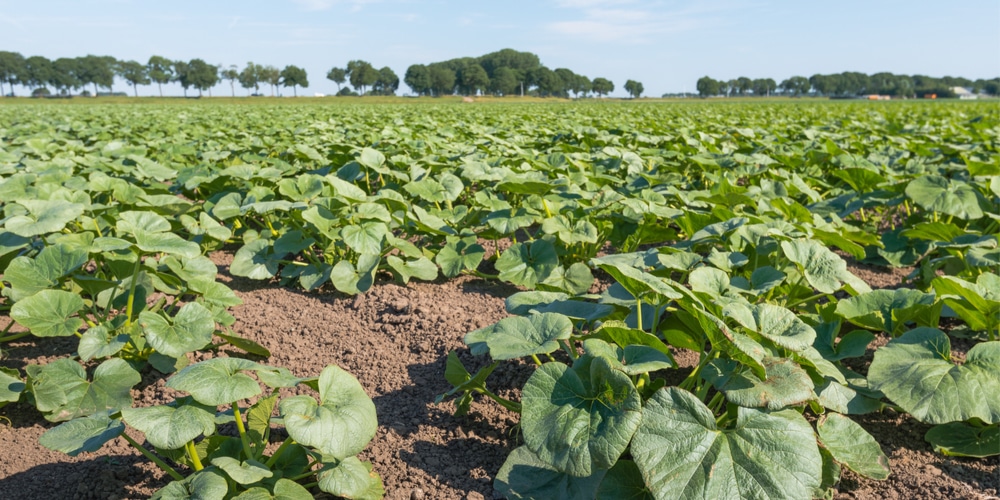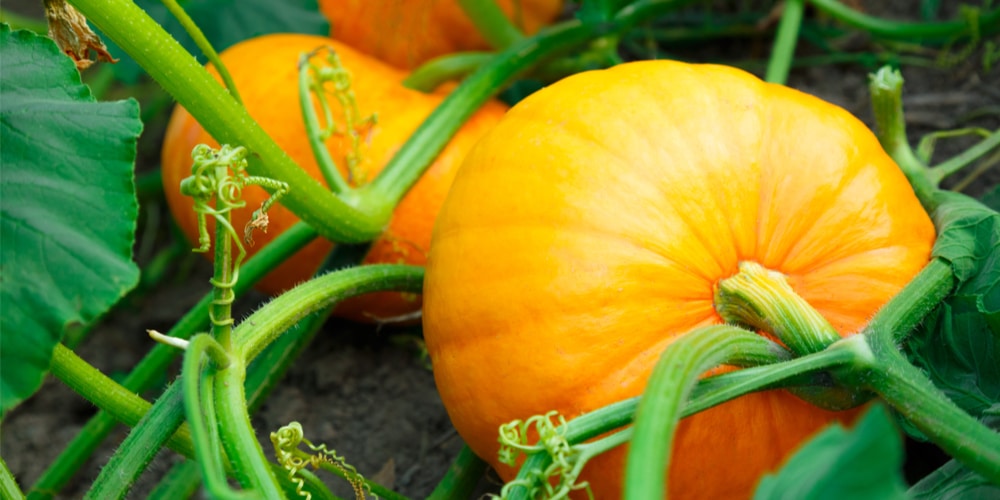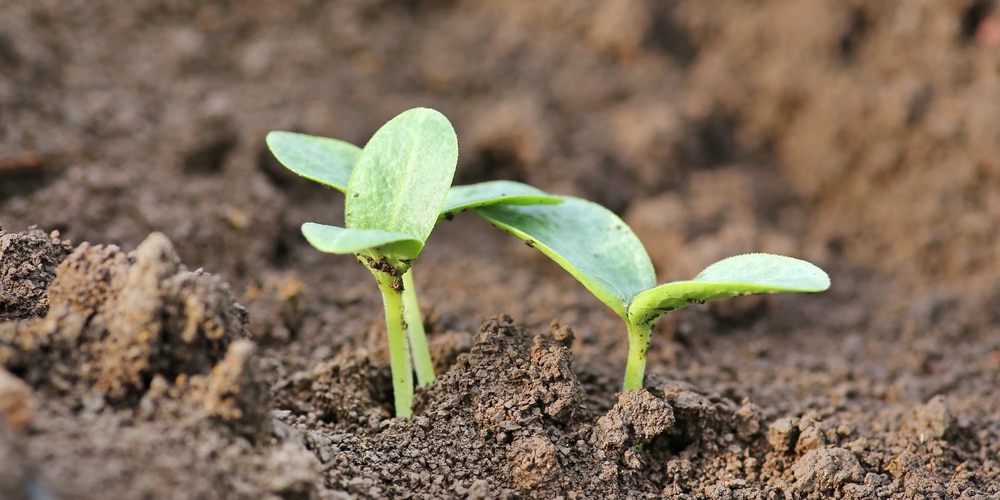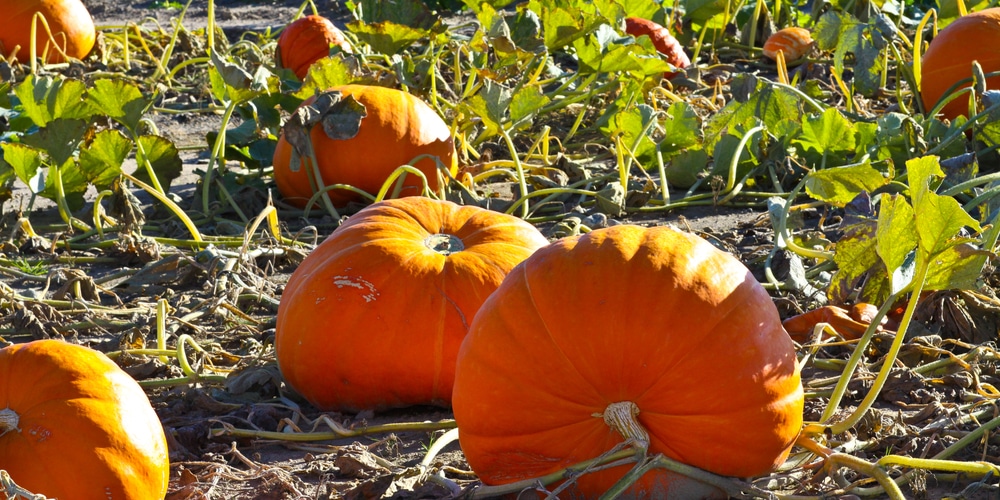There’s something about pumpkins that just screams “fall.” This beloved fall favorite is not only a festive decoration but can also be used in cooking and baking. If you’re looking to get into the pumpkin-growing spirit this year, taking care of your pumpkin patches and their vines is a great place to start.
When planted, its distinctively large leaves make it easy to spot a pumpkin plant in a crowded garden. The plant will continue to grow and produce more leaves throughout the season.
While the size and shape of pumpkin leaves can vary, they all have smooth, lobed edges.
Despite the bright-green leaves, the stems of pumpkin vines are actually a deep purple – and they play a crucial role in the development of pumpkins.
Why Should You Care for Your Pumpkin’s Vines?
Given the pumpkin’s popularity in Fall, it’s no surprise that many people go to great lengths to grow the perfect specimen each year.
While most people focus on the pumpkin itself, it’s essential not to forget about the vines.
After all, without healthy vines, pumpkins would never reach their full potential. Here are just a few reasons why you should take care of your pumpkin’s vines:
Healthy Pumpkins Produce More Fruit
A healthy pumpkin vine is a productive pumpkin vine. More leaves mean more surface area for photosynthesis to occur.
More surface area means the plant can produce more fruit. And, of course, more fruit means more pumpkins! So if you want to maximize your pumpkin harvest, caring for pumpkin vines plays an integral role.
Pumpkin Vines Are Susceptible to Pests and Diseases
When you think about pumpkin care, chances are that you focus mainly on the pumpkins themselves.
After all, these are the fruits of your labor that will ultimately be carved into jack-o-lanterns or baked into pies.
However, it’s important to remember that the vines that produce pumpkins are just as important as the pumpkins themselves. Without healthy vines, your pumpkins will be small, misshapen, and unproductive.
Unhealthy vines are susceptible to all sorts of pests and diseases, including powdery mildew, cucumber mosaic virus, and downy mildew.
By keeping an eye on the health of your vines and taking steps to prevent pests and diseases, you can ensure a bumper crop of healthy pumpkins.
Pumpkin Vines Need Nutrients
Pumpkins get their nutrients from the vine, and carefully monitoring the nutrient levels in your soil is crucial to the health of your plants.
Pumpkin vines are heavy feeders and require a lot of nitrogen, phosphorus, and potassium to thrive. If you notice your pumpkin vines struggling, they may need a boost of nutrients.
When Will You Notice Pumpkins Appearing?
As soon as the soil in your garden warms up to at least 60 degrees Fahrenheit, you can plant pumpkin seeds.
Once the seeds have germinated and the seedlings have sprouted, the vines will start to develop. The plant will go through many pumpkin growth stages.
They may not be visible at first, but you’ll soon see the telltale leaves popping up through the soil.
These vines can grow up to 6 feet in a single season, so be sure to give them plenty of room to roam.
How to Control Pumpkin Vines
As the vines grow, they’ll start to produce tendrils that help them climb and spread. The tendrils will wrap around anything they come in contact with – including other plants, fences, and even garden stakes. When left unchecked, pumpkin vines can quickly take over your garden.
To keep the vines under control, here are a few things you can do:
Train the Vines
You can direct the growth of pumpkin vines by training them to climb a trellis, fence, or other support. This will keep the vines off the ground and make it easier to manage them. When you train the vines, give them plenty of room to grow.
Prune the Vines
Pruning pumpkin vines can help to encourage fruit production and prevent the plants from taking over your garden. When pruning, remove any dead or diseased leaves or stems. You can also cut back wayward vines that are crowding other plants.
When pruning your vines, there are a few practices to remember:
- Use clean, sharp pruning shears. This is to ensure you have a clean cut that won’t damage the plant.
- Make sure to sterilize your pruning shears before and after use. This will help to prevent the spread of disease.
- Pruning should be done in the early morning or evening when it’s cooler outside. This will help to minimize stress on the plant.
- Make cuts at a 45-degree angle, just above a leaf node.
- Remove no more than one-third of the plant.
- Only prune vines that are more than 10 feet long. Anything shorter than that can be left alone unless it’s crowding other plants.
General Pumpkin Vine Care Tips
A pumpkin’s vine serves as its lifeline, providing the plant with the nutrients to grow. By taking care of the pumpkin vines, you can ensure a healthy crop of pumpkins.
Here are a few tips to keep in mind when planting and caring for your pumpkin vines:
Ensure the Vines Aren’t Blocked
The vines need room to grow and spread, so be sure to clear any obstacles that might block their path. This includes removing weeds, rocks, and other debris from the area around the plants. They need to be able to access water, so make sure their roots aren’t blocked by anything.
Water the Vines Regularly
As mentioned earlier, these vines provide pumpkins with the water they need to grow. Make sure to water the vines regularly, especially during hot, dry weather. Pumpkins require lots of water, so be sure to give them a deep watering at least once a week. The soil should be kept moist but not soggy.
Give it 6 Hours of Sunlight
Pumpkins need plenty of sunlight to grow, so be sure to give them at least six hours of direct sunlight each day. If you live in an area with hot summers, you may need to provide some shade for the plants during the hottest part of the day.
Fertilize Every Few Weeks
As pumpkin vines are heavy feeders, they’ll need to be fertilized every few weeks. A general-purpose fertilizer will work fine, or you can use a fertilizer specifically designed for vegetables. Be sure to follow the instructions on the fertilizer package so you don’t overdo it.
How Long Do Vines Last?
Given the right growing conditions, pumpkin vines will stay green and healthy until the pumpkins are ready to harvest. After that, you’ll notice that the vines will start to yellow and die back. This is normal and nothing to worry about.
Once the pumpkins are harvested, you can remove the vines from your garden. If you want, you can compost them or add them to your compost pile.
Final Thoughts
Pumpkins are a favorite among gardeners for their hardiness and ability to produce an abundance of fruit. Taking care of its vines is just as crucial as taking care of the pumpkin plant itself.
When given the right care, your pumpkin vines will be able to provide you with a bountiful harvest. Just be sure to keep an eye on them and address any problems that may arise.
With a little bit of effort, you’ll be able to enjoy pumpkins all autumn long!
Related Article: Pumpkin Companion Plants




